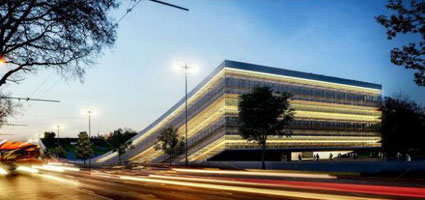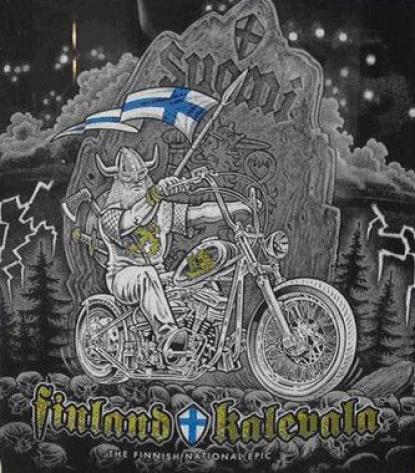2024. April 18. Thursday
Museum of Ethnography - Budapest
 |
Address: 1146, Budapest Dózsa György út - Ötvenhatosok tere
Phone number: (1) 473-2400
E-mail: info@neprajz.hu
Opening hours: Tue-Sun 10-18
|
The exhibition has closed for visitors.
2010.04.02. - 2010.05.09.
Museum tickets, service costs:
|
Individual ticket for adults
|
3000 HUF
|
|
|
Individual ticket for adults
(1 hour before closing)
|
1600 HUF
|
|
|
Group ticket for adults
(min. 10 people)
|
2600 HUF
|
/ capita
|
|
Individual ticket for students
|
1500 HUF
|
|
|
Individual ticket for students
(1 hour before closing)
|
800 HUF
|
|
|
Group ticket for students
(min. 10 people)
|
1300 HUF
|
/ capita
|
|
Individual ticket for pensioners
|
1500 HUF
|
|
|
Individual ticket for pensioners
(1 hour before closing)
|
800 HUF
|
|
|
Group ticket for pensioners
(min. 10 people)
|
1300 HUF
|
/ capita
|
|
Ticket for families
(2 adults + max. 3 children (up to 18 years old))
|
6300 HUF
|
/ family
|
|
Individual combined ticket for adults
(Zoom permanent exhibition + Ceramics Space + MÉTA)
|
1700 HUF
|
|
|
Individual combined ticket for adults
(We Have Arrived temporary exhibition + Ceramics Space + MÉTA)
|
2000 HUF
|
|
|
Individual combined ticket for students
(Zoom permanent exhibition + Ceramics Space + MÉTA)
|
850 HUF
|
|
|
Individual combined ticket for students
|
1000 HUF
|
|
|
Individual combined ticket for pensioners
(Zoom permanent exhibition + Ceramics Space + MÉTA)
|
850 HUF
|
|
|
Individual combined ticket for pensioners
(We Have Arrived temporary exhibition + Ceramics Space + MÉTA)
|
1000 HUF
|
|
|
Group walk ticket
(building walk, max. 15 people)
|
1500 HUF
|
/ capita
|
|
Group walk ticket for students
(Méta gallop, 10-20 people)
|
1200 HUF
|
/ capita
|
|
Group walk ticket
(building walk, in English, max. 15 people)
|
1800 HUF
|
/ capita
|
|
Group walk ticket for students
(Méta gallop, 10-20 people, in English)
|
1400 HUF
|
/ capita
|
|
Group guide
(10-20 people)
|
1000 HUF
|
/ capita
|
|
Group guide
(thematic, whit the curator of the exhibition, 5-20 people)
|
1300 HUF
|
/ capita
|
|
Group guide for students
(min. 10 people)
|
800 HUF
|
/ capita
|
|
Group guide
(10-20 people, in English)
|
1300 HUF
|
/ capita
|
|
Group guide
(thematic, whit the curator of the exhibition, in English, 5-20 people)
|
1690 HUF
|
/ capita
|
|
Group guide for students
(in English, 10-20 people)
|
1000 HUF
|
/ capita
|
|
Audio guide
|
1000 HUF
|
|
|
Photography
(for camera, camera-stand and telephoto lens)
|
700 HUF
|
Metal music has become one of the best known Finnish cultural exports. This fact shows a new, contemporary stereotype about the country and Finnish culture. Finnish metal music has been popular on the international music scene since the 1990s and the country's groups represent numerous heavy metal types (death, black, gothic, symphonic, folk and Viking metal). These songs are played quite often in Finnish radio, during the break of ice hockey matches, they are the leaders of music top lists in Finland and representing the country at the Eurovision Song Contest (Lordi was the winner in 2006). Some of these groups use elements of traditional Finnish culture (Kalevala, folk tales and folk music), the symbolism they use is representing Finland and Finnishness. Others are moving away from these traditional themes and becoming more international than Finnish.

People wearing clothing and accessories linked to Finnish metal bands and visible to the outside observer are a common sight in Hungary too; anyone walking around the streets, travelling on a train or attending festivals can see young people wearing clothing associated with Finnish metal music. What do these T-shirts and symbols say about Finnish metal music and Finland? The components of this particular dimension are the items of clothing and accessories generally with reproductions of the band's logo and LP or later CD cover; products related to concert tours can also be found. This exhibition call these objects and other, personal relics to represent the Finnish metal music, it's special characther and connection to Finland.
In many respects there is still no explanation for why so many heavy metal groups are formed in Finland and why there are proportionately so many Finnish groups among the international leaders. The answers proffered suggest that the phenomenon can be attributed to the suppressed passion, depression, darkness, sincerity and bitterness characteristic of the Finns.
The groups shown in this exhibition stress another, new side of Finland: at a certain level we still meet the people of the forest, the Kalevala - but we can also see how they create new musical styles from their own traditions and how the groups adapt international music trends in a Finnish way. On the other hand all the well known stereotypes about Finland (forest, lake, sauna, darkness, quality) can be found in the music, texts and visual world of Finnish metal, thereby also reproducing them at some level and filling them with new content.
Curator: Tímea Bata

People wearing clothing and accessories linked to Finnish metal bands and visible to the outside observer are a common sight in Hungary too; anyone walking around the streets, travelling on a train or attending festivals can see young people wearing clothing associated with Finnish metal music. What do these T-shirts and symbols say about Finnish metal music and Finland? The components of this particular dimension are the items of clothing and accessories generally with reproductions of the band's logo and LP or later CD cover; products related to concert tours can also be found. This exhibition call these objects and other, personal relics to represent the Finnish metal music, it's special characther and connection to Finland.
In many respects there is still no explanation for why so many heavy metal groups are formed in Finland and why there are proportionately so many Finnish groups among the international leaders. The answers proffered suggest that the phenomenon can be attributed to the suppressed passion, depression, darkness, sincerity and bitterness characteristic of the Finns.
The groups shown in this exhibition stress another, new side of Finland: at a certain level we still meet the people of the forest, the Kalevala - but we can also see how they create new musical styles from their own traditions and how the groups adapt international music trends in a Finnish way. On the other hand all the well known stereotypes about Finland (forest, lake, sauna, darkness, quality) can be found in the music, texts and visual world of Finnish metal, thereby also reproducing them at some level and filling them with new content.
Curator: Tímea Bata
